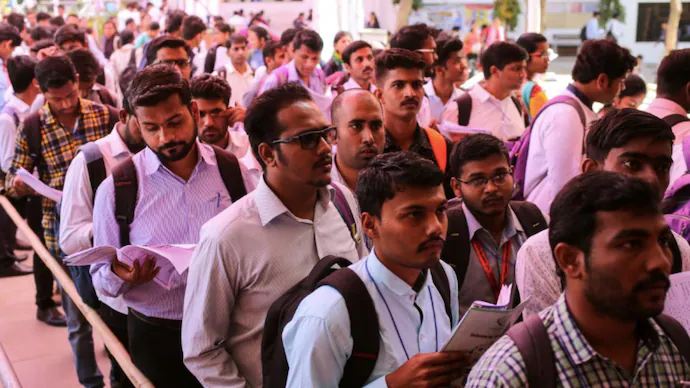Overview of Global Per Capita Income Rankings
Per capita income serves as a crucial metric to evaluate the economic well-being of countries, offering insights into the average income earned per person in a given year. According to the most recent data from reputable financial institutions, the top ten countries with the highest per capita income are primarily concentrated in Europe and North America, reflecting their advanced economies and robust systems of wealth distribution.
The rankings fluctuate annually based on various economic factors, including GDP growth, employment rates, investment levels, and socio-political stability.
As of the latest analysis,
- Luxembourg holds the premier position with a remarkable per capita income, a testament to its thriving financial sector and favorable taxation policies that attract multinational corporations.
- Following closely are other affluent nations such as Switzerland, Norway, and Ireland, each demonstrating strong economic performance bolstered by diverse industrial bases.
- Switzerland’s wealth stems from its banking infrastructure and high-value manufacturing.
- Norway benefits significantly from its natural resources, particularly oil.
- Ireland’s rapid economic growth can be attributed to its favorable business environment that has drawn substantial foreign direct investment.
- In addition to Western countries, Qatar and Singapore make their presence felt in the rankings due to their strategic geographical positions and strong economic policies.
- Qatar has leveraged its abundant natural gas reserves, and Singapore has developed into a global trading hub with a highly skilled workforce.
These nations showcase the diversity in sources of wealth generation, encompassing both resource-rich economies and those leveraging global marketplace access.
Understanding these top performers is pivotal as it frames the context for evaluating India’s position in the global landscape. India’s per capita income has seen gradual improvements but remains behind the leading countries. Factors such as economic reforms, demographic advantages, and digital innovation are crucial as India strides towards enhancing its economic standing and increasing its competitiveness on the global stage.

India’s Current Standing in Per Capita Income Rankings
As of the latest data available, India’s per capita income stands at approximately $2,256, placing it lower in comparison to the top 10 countries with the highest per capita incomes. According to the World Bank, countries such as Luxembourg, Switzerland, and Ireland lead the rankings, boasting per capita incomes over $100,000, highlighting a significant gap between these nations and India
. The stark contrast in income levels raises important questions about economic development and income distribution. While India has made impressive strides in various sectors, including technology and services, it still faces challenges that hinder its ascent in the global economic hierarchy.
Over the past few years, India’s per capita income has shown a steady increase, reflecting the country’s robust economic growth rate. In 2014, India’s per capita income was around $1,600, and it has gradually risen, demonstrating an upward trend in economic performance. However, this growth has not been sufficient to elevate India into the higher ranks of per capita income.
Factors such as:
- Population growth
- Income inequality
- Regional disparities
Continue to impact overall income levels adversely, presenting significant hurdles for further growth. Additionally, the implications of India’s current ranking are multifaceted. A lower per capita income suggests that a considerable portion of the population still lives below the poverty line, facing challenges access to basic necessities like education and healthcare.
These socio-economic issues underline the urgent need for policy measures addressing income distribution and economic inclusivity. Yet, there are opportunities on the horizon as well; if India successfully harnesses its demographic dividend and seeks to advance through technological innovation and sustainable practices, it may fortify its position in future per capita income rankings.
Factors Hindering India’s Per Capita Income Growth
- India, with its rapidly growing economy, faces several challenges that impede the growth of per capita income. Key among these is pervasive income inequality, which remains a significant barrier to equitable economic development.
- The wealth generated in the country is not evenly distributed, leading to stark disparities between different socio-economic groups. This inequality curtails the purchasing power of a substantial portion of the population, thereby limiting overall economic consumption and growth.
- Another critical factor is the employment challenge, defined by a disparity between job availability and population growth. Despite impressive economic growth figures, many individuals struggle to find stable, well-paying jobs.
- The informal sector dominates the Indian job market, leading to precarious employment conditions without job security or benefits. This lack of formal employment opportunities directly impacts per capita income levels, as underemployment and low wages contribute to stagnant income growth for many households.
- Additionally, education disparities significantly hinder long-term economic prospects. While access to education has improved, the quality of education remains uneven across different regions.
- Many individuals, especially in rural areas, do not receive adequate training or higher education, which limits their job prospects in a competitive global economy. Enhancing educational outcomes is essential for improving the skilled labor pool and fostering economic innovation.
- The infrastructure deficits in India further exacerbate these challenges.
- Insufficient transportation, energy, and digital infrastructure limit businesses’ ability to operate efficiently, ultimately affecting productivity and growth potential.
- Moreover, regulatory hurdles create additional obstacles for businesses, resulting in a complex bureaucracy that can deter investment and entrepreneurial ventures.

In summary, addressing the multifaceted structural issues, including income inequality, employment challenges, educational disparities, infrastructure deficits, and regulatory barriers, is vital for enhancing India’s per capita income. By tackling these factors, India can forge a path toward sustainable economic growth and improved living standards for its citizens.
Strategies for Improvement: How India Can Boost Its Per Capita Income
- India’s per capita income presents a complex picture, with ample opportunities for growth and development. To enhance this figure significantly, it is essential to pursue various strategies that target both governmental reforms and individual contributions. A multifaceted approach can stimulate economic growth, leading to higher living standards for the population.
- At the governmental level, policymakers should focus on implementing economic reforms that create a conducive environment for businesses. This involves simplifying regulations, enhancing infrastructure, and promoting foreign investments.
- Streamlining the tax system can also encourage entrepreneurship by reducing the financial burden on startups and small businesses. Another crucial aspect is the emphasis on sectors such as manufacturing and technology; boosting domestic industries through favorable policies can lead to significant job creation, thereby increasing per capita income.

- Investments in education and technology play an equally vital role in fostering economic growth. Improving the quality of education, particularly in STEM fields (science, technology, engineering, and mathematics), will equip the workforce with the skills necessary for high-paying jobs.
- Furthermore, embracing digital technologies can lead to more efficient business operations, cutting costs and increasing productivity. This transition can benefit not only large corporations but also small enterprises, encouraging innovation and competitiveness in the global market.
- On an individual level, citizens can contribute to economic improvement by engaging in skill development initiatives and participating in community projects. By acquiring relevant skills, individuals can increase their employability and wage potential, which directly impacts the nation’s per capita income.
- Community engagement can foster entrepreneurial spirit by sharing knowledge and resources, thus leading to a collective uplift in economic conditions.
- Therefore, by employing a combination of strategic governmental policies and active individual participation, India can foster an environment conducive to economic growth, significantly enhancing its per capita income and overall quality of life for its citizens.





Leave a Reply